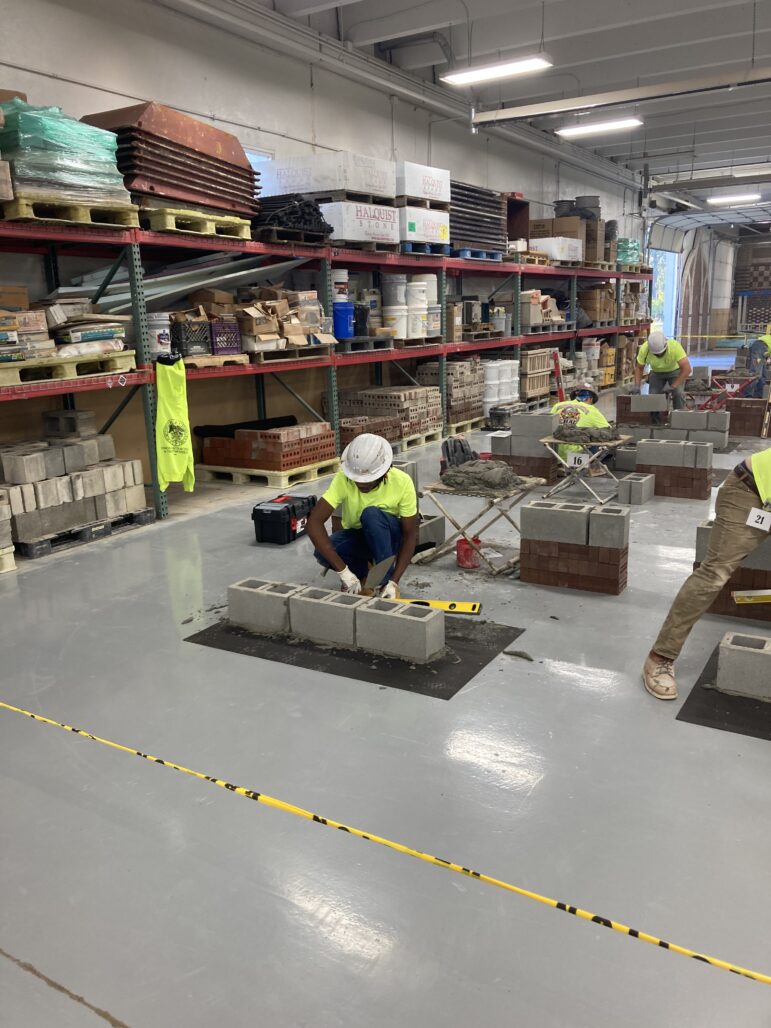
By GABRIEL S. MARTINEZ
Capital News Service
LANSING — Community colleges are partnering with labor unions to provide specialized education and hands-on experience as the primary option for students who want a career in a skilled trade.
Brandy Johnson, the president of the Michigan Community College Association, said the schools provide academic credit to students in recognition of their apprenticeship experiences.
“Something we’re starting to explore is being more precise with honoring the learning that happens in registered apprenticeships,” Johnson said. “We want to make sure that our community colleges are giving academic credit for registered apprenticeships.”
The term used is “ credit for prior learning,” a trend community colleges are starting to notice among students interested in trade options, according to Johnson.
Brett Gierak, the secretary-treasurer of the International Union of Bricklayers & Allied Craftworkers Local 2 and a trustee of Schoolcraft College in Livonia, said anyone who goes into Schoolcraft’s apprenticeship program automatically gets 25 credits towards an associate’s degree in construction management.
“It’s a way for some of our members to spend a few years in the trade, and then be promoted into an office position,” Gierak said. “Anytime you’re on a construction project, there’s usually a general contractor who has a field superintendent. Those are the types of roles our members could get if they went and got their associate’s.”
The application process for students without prior vocational education includes an interview, a high school diploma or GED and two reference letters.

Students can then decide which trade interests them.
Johnson said more labor unions are joining with community colleges to provide classroom learning or to use community college facilities and equipment for training.
Gierak said he’s noticed an increase in applicants, creating a backlog of candidates waiting to begin Schoolcraft’s program.
“We presently have 290 in the pipeline wanting to get in, ” Gierak said. “Five years ago there was no backlog. There has definitely been a huge increase in people wanting to get into trades.”
Apprenticeship data from the U.S. Department of Labor,shows a 99.1% increase in participants in Michigan since 2014.
Recently, Rep. Tom Kuhn, R-Troy, voted against a proposal to require an apprenticeship degree to work on state construction projects.
The proposal was not enacted, allowing longtime construction workers without degrees to maintain their employment status by using work experience as the basis for their qualification.
Although he voted against that proposed change, Kuhn said he supports community college involvement in apprenticeships.
“We’re all for working with community colleges. We want to further vocational opportunities for everyone,” Kuhn said.
Manny Lamarre, the deputy assistant secretary for employment and training in the U.S. Labor Department, said apprenticeships ensure that students gain relevant industry skills valued by employers.
“They receive a progressive wage increase as they achieve those skills gains,” Lamarre said. “Apprenticeships provide students with an opportunity to access industries and occupations to which they typically may not have had access.”
National data provided by Monica Vereen, a Department of Labor public affairs specialist, shows:
- Apprentice graduates earn more over their lifetime than peers without apprenticeships.
- About 90% of apprentices retain employment after completion of training,
- Apprentices have an $80,000 average starting salary after completing their program.